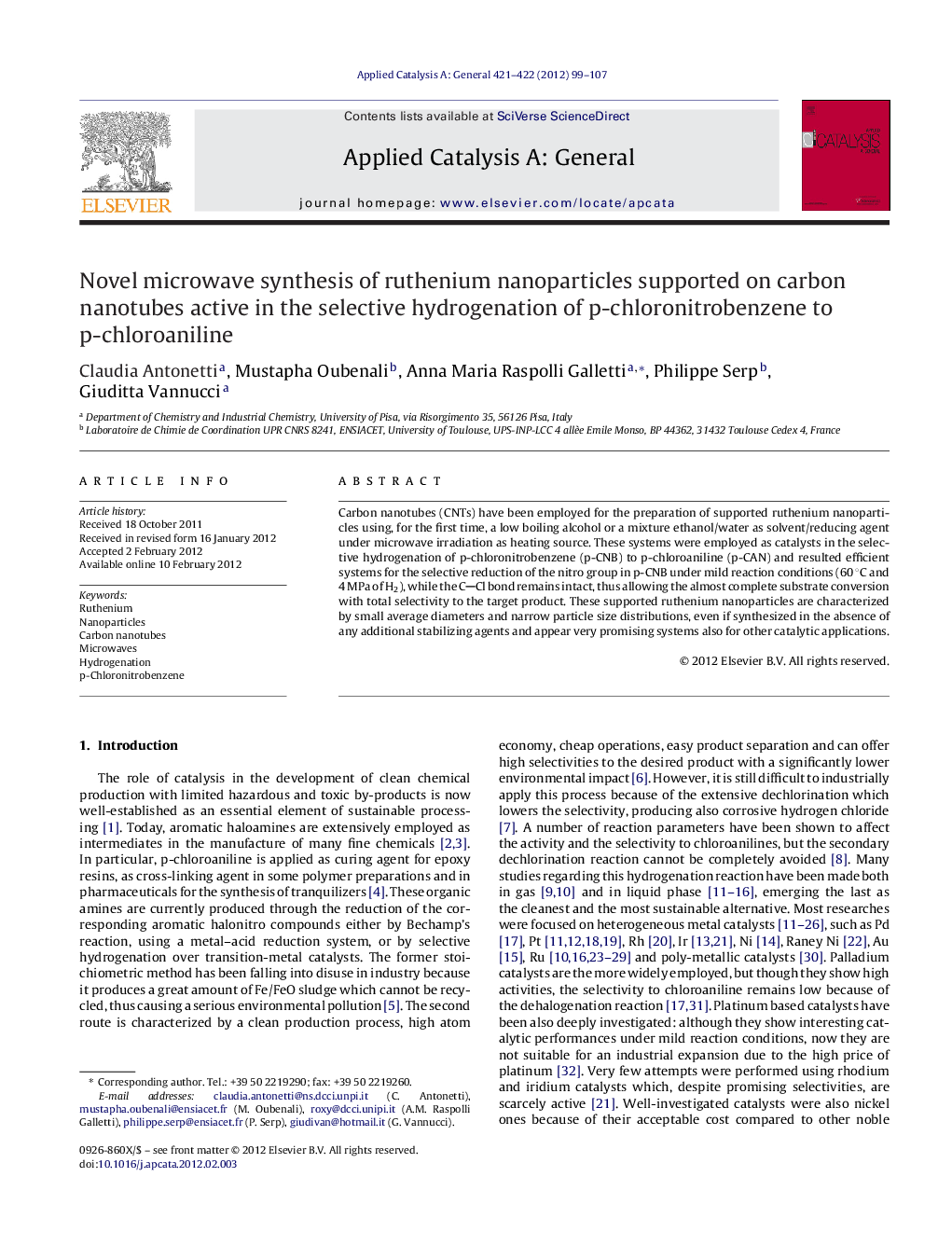| Article ID | Journal | Published Year | Pages | File Type |
|---|---|---|---|---|
| 40980 | Applied Catalysis A: General | 2012 | 9 Pages |
Carbon nanotubes (CNTs) have been employed for the preparation of supported ruthenium nanoparticles using, for the first time, a low boiling alcohol or a mixture ethanol/water as solvent/reducing agent under microwave irradiation as heating source. These systems were employed as catalysts in the selective hydrogenation of p-chloronitrobenzene (p-CNB) to p-chloroaniline (p-CAN) and resulted efficient systems for the selective reduction of the nitro group in p-CNB under mild reaction conditions (60 °C and 4 MPa of H2), while the CCl bond remains intact, thus allowing the almost complete substrate conversion with total selectivity to the target product. These supported ruthenium nanoparticles are characterized by small average diameters and narrow particle size distributions, even if synthesized in the absence of any additional stabilizing agents and appear very promising systems also for other catalytic applications.
Graphical abstractFigure optionsDownload full-size imageDownload high-quality image (173 K)Download as PowerPoint slideHighlights► A new route of synthesis of Ru/CNTs catalysts was devised adopting MW irradiation. ► A green mixture of ethanol/water was adopted as solvent/reducing agent. ► The obtained ruthenium nanoparticles have small dimensions and narrow size distributions. ► Good selectivity in the hydrogenation of p-chloronitrobenzene to p-chloroaniline.
